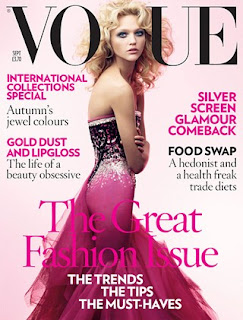EOTO #2 Reaction Post
During my peers presentations the topics that really stuck with me were this history of gossip columns and fashion journalism. These two topics really interested me because as a teenage girl these are two things I absolutely live for and was excited to learn the origins of each of these topics.
History of Gossip Columns
Gossip Columns began in the 19th century and were first started with James Gordon Bennett in the New York Herald. In these gossip columns they mainly focused on New York's Elite. Over time the focus switched the the rise of Hollywood which began to focus on movie stars and their private lives. Although some argued about the ethics behind gossip columns they were still made and began to grow.
Gossips columns from the 90's and early 2000's still continued to post about movie stars, singers, models, anyone famous' private lives even if the facts are true or false. Popular magazines like Us Weekly, People, In touch, and TMZ were most popular to post about gossip. In modern day we find celebrity gossip on social media like TikTok, YouTube, and Instagram. Although gossip magazines still exist social media algorithms constantly put gossip onto our feeds even if we don't necessary follow people who expose celebs.
History of Fashion Journalism
The first fashion magazine known was from 18th century France, the first edition was published in November of 1785 and was called Cabinet des Modes ou les which means: Cabinet of Fashions or New Fashions. It was a subscription based magazine that was distributed in France and abroad with each edition having eight pages with three hand painted pieces highlighting the fashion.
In 1892 the popular fashion magazine that is still around today known as Vogue was created and founded by Arthur Baldwin Turnure. Vouge highlighted New York Cities upper class by the clothes they wore all they way to the places they frequented. The first issue was related in December of 1892 and published weekly for 17 years. Today we still have popular fashion magazines such as Vogue, Forbes Life, Elle, Cosmopolitan, and many more that continue to talk about todays fashion and photograph public figures such as singers, models, businesswomen, and influencers.










